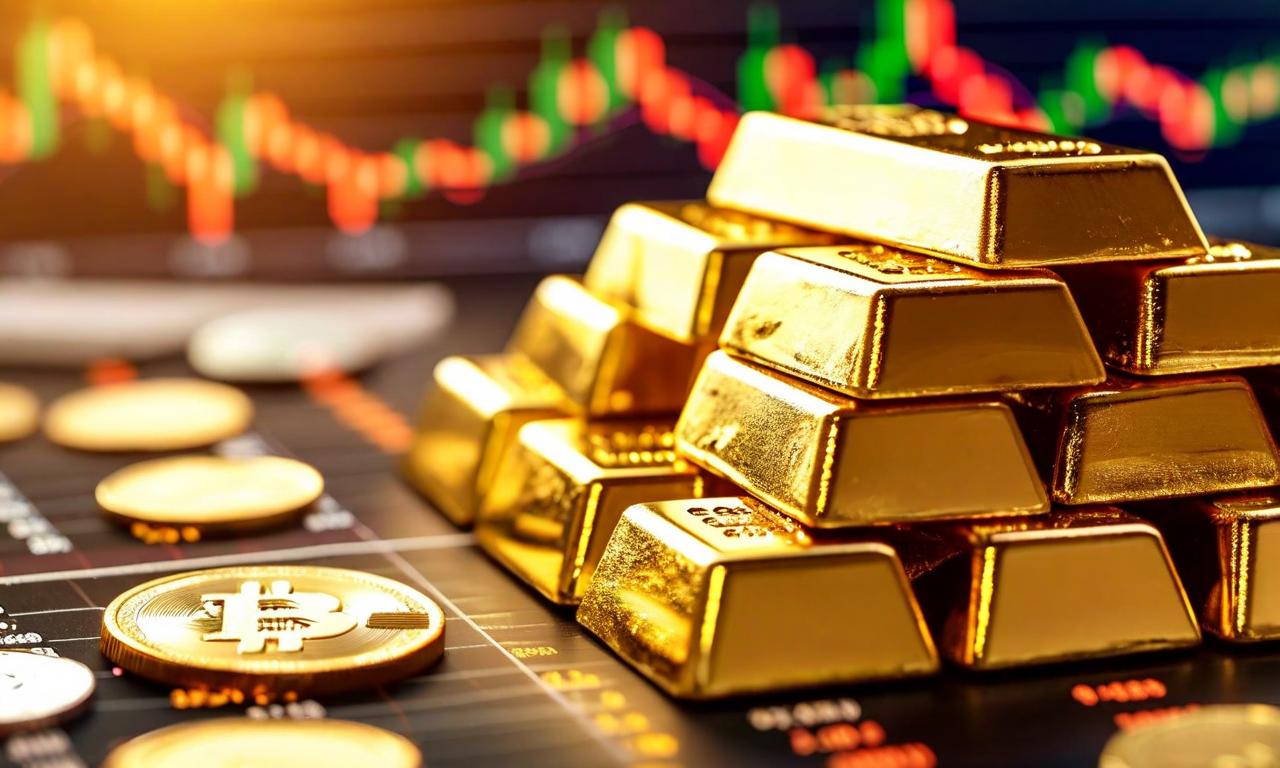Gold Prices Pull Back After Record Run, Driven by Investor FOMO Rather Than Economic Fundamentals
Gold prices have experienced a significant pullback, including the largest single-day drop in more than 10 years, despite remaining at record highs when adjusted for inflation. This follows a period of substantial gains where gold surpassed $4,000 per ounce. The recent rally was largely driven by retail investor participation and FOMO, rather than fundamental factors. Despite the pullback, economic uncertainties persist, including stable U.S. dollar and Treasury yields, resilient private sector employment, and changing expectations for Federal Reserve rate cuts.

*this image is generated using AI for illustrative purposes only.
Gold prices have experienced a sharp pullback, including the biggest single-day fall in over a decade, though the metal remains at record highs in inflation-adjusted terms. This development comes after a period of significant gains that saw gold breaking through the $4,000 per ounce barrier amid economic uncertainties in the United States.
Market Analysis
Financial analysts from Renaissance Investment Managers note that gold's traditional inverse relationship with US Treasury real yields broke down in 2022, with gold continuing to rise despite climbing real yields. Two structural factors initially supported gold demand:
- Central banks, particularly in emerging markets, diversifying away from the US dollar after Russia's reserve assets were frozen in 2022.
- The perception of gold as a sanction-proof store of value.
However, analysts argue the recent price surge was primarily driven by retail investor participation and fear of missing out (FOMO), evidenced by correlation between gold prices and Google searches for 'Gold ETF'. This suggests that the rally may have been more speculative than fundamentally driven.
Economic Indicators
Despite the recent pullback, several economic factors continue to influence the gold market:
- The U.S. dollar has remained relatively stable, contradicting the currency debasement narrative often cited as a driver for gold prices.
- Treasury yields have been steady, further challenging traditional explanations for gold's rise.
- Private sector employment showed resilience, with employers adding 42,000 jobs in October, surpassing the forecast of 28,000.
- The Federal Reserve recently cut interest rates, though Chair Jerome Powell suggested this might be the last reduction for the foreseeable future.
- Market expectations for a December rate cut have decreased to 63% from over 90% in the previous week.
Market Movements
Prior to the pullback, the precious metals market had seen significant gains across the board:
| Metal | Price | Change |
|---|---|---|
| Spot Gold | 4011.79 | 0.70% |
| US Gold Futures | 4021.20 | 0.70% |
| Silver | 48.74 | 1.40% |
| Platinum | 1567.01 | 0.40% |
| Palladium | 1434.22 | 1.10% |
Legal and Political Developments
Adding to the economic uncertainty:
- U.S. Supreme Court justices have expressed skepticism about President Trump's tariffs, potentially impacting trade policies.
- The ongoing government shutdown continues, raising concerns about its impact on the economy.
Expert Outlook
UBS analyst Giovanni Staunovo had provided an optimistic view for gold, stating that further Federal Reserve rate cuts could push the price to $4,200 per ounce by year-end. However, the recent pullback suggests a more complex market dynamic.
As the gold market experiences this significant correction, investors and market watchers will likely keep a close eye on upcoming economic data, Federal Reserve statements, and developments in the ongoing government shutdown for cues on gold's future price movements. The recent events underscore the importance of distinguishing between speculative fervor and fundamental economic drivers in the precious metals market.





























